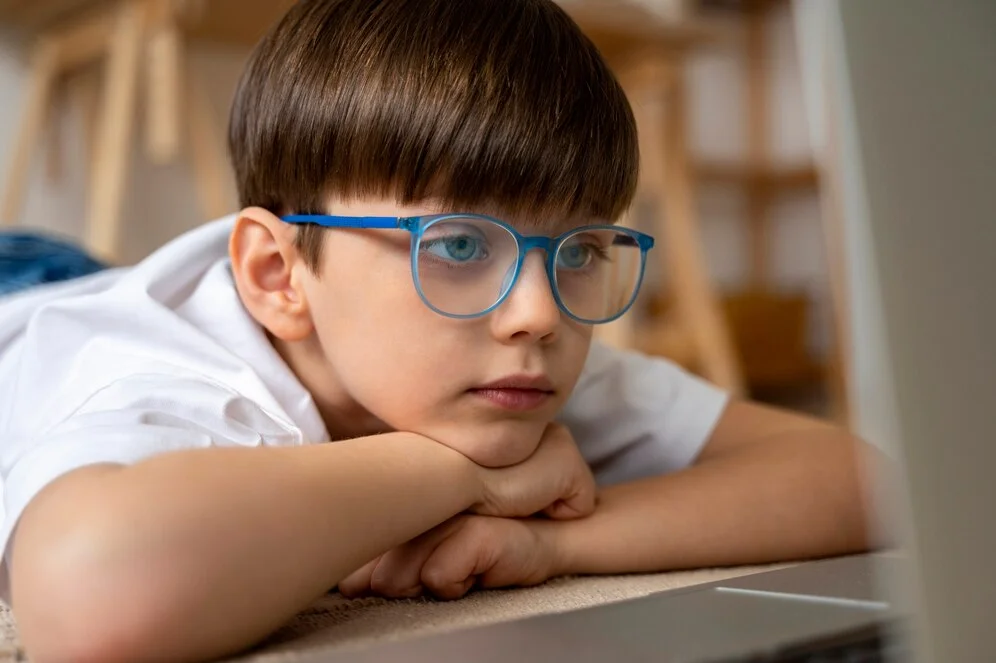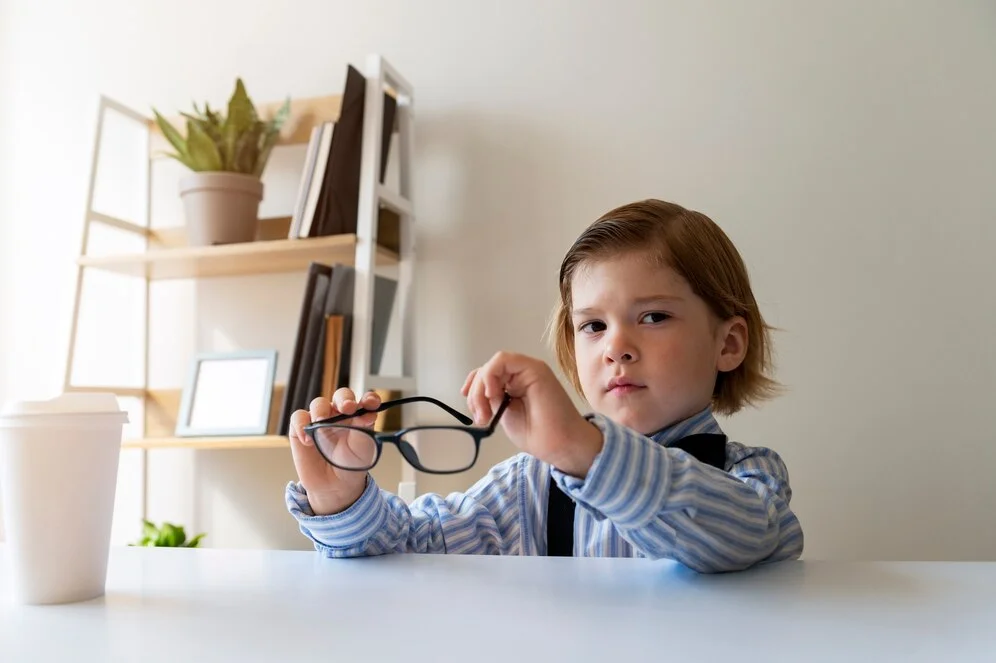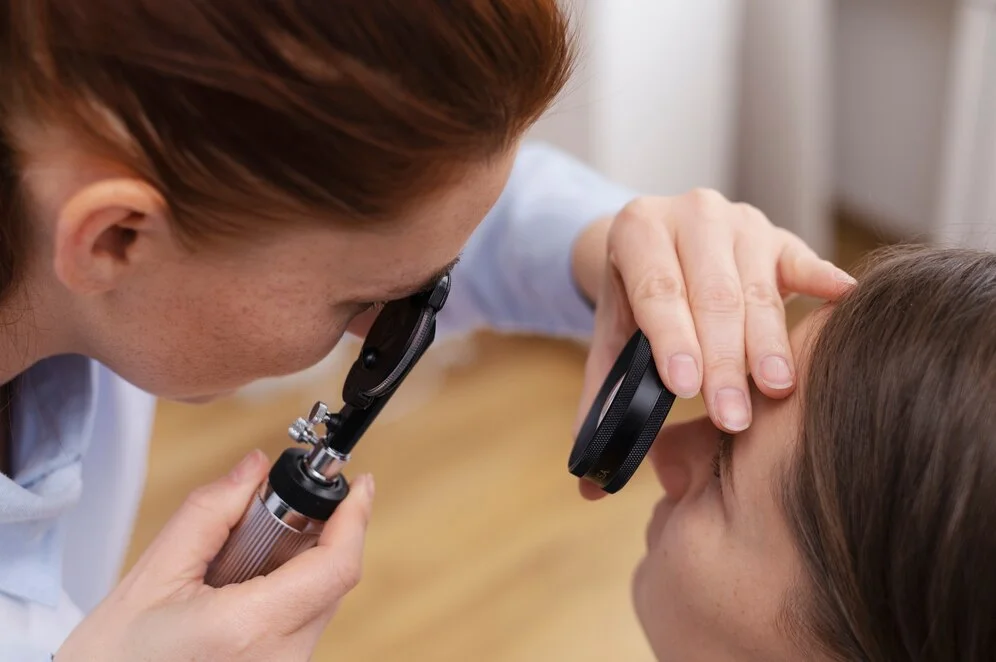Vision Problems in Kids can affect learning, behavior, and development. Discover early signs, prevention strategies, and when to seek expert eye care for your child.
Ensuring the optimal eye health of children is a fundamental aspect of their overall development and well-being. Early detection of vision problems in kids can significantly influence their academic performance, social interactions, and daily activities. This comprehensive guide aims to equip parents and caregivers with the knowledge to identify early signs of vision issues, understand their implications, and take proactive measures to address them.
Importance of Early Detection
Children often adapt to vision impairments without realizing there’s an issue, making it imperative for adults to recognize potential problems. Undiagnosed vision issues can lead to challenges in learning, behavioral problems, and even permanent vision loss if left untreated. Regular eye examinations and vigilant observation can prevent these adverse outcomes.

Common Vision Problems in Children
Understanding prevalent vision issues can aid in early identification and intervention:
Refractive Errors
These occur when the eye doesn’t bend light correctly, resulting in blurred vision. The primary types include:
- Myopia (Nearsightedness): Difficulty seeing distant objects clearly.
- Hyperopia (Farsightedness): Difficulty seeing close objects clearly.
- Astigmatism: Blurred vision due to an irregularly shaped cornea.
Refractive errors are common in children and can often be corrected with glasses or contact lenses.
Amblyopia (Lazy Eye)
This condition arises when one eye develops poor vision due to underuse during early childhood. Early treatment is crucial to prevent permanent vision impairment.
Strabismus (Crossed Eyes)
Characterized by misaligned eyes that do not look at the same place at the same time. Early intervention can correct alignment and prevent vision problems.
Convergence Insufficiency
A condition where the eyes struggle to work together when looking at close objects, leading to difficulties in reading and other close-up tasks.
Early Signs of Vision Problems in Kids
Recognizing the signs of vision problems in kids is vital for timely intervention. Key indicators include:
- Frequent Eye Rubbing or Blinking: Persistent eye rubbing may indicate eye strain or fatigue.
- Squinting or Closing One Eye: Squinting helps temporarily improve focus, suggesting refractive errors.
- Tilting the Head or Covering One Eye: These behaviors may compensate for double vision or misalignment.
- Holding Objects Close to the Face: Sitting too close to screens or holding books near the face can indicate nearsightedness.
- Short Attention Span for Age-Appropriate Tasks: Difficulty maintaining focus on visual tasks may be due to vision issues.
- Losing Place While Reading: Skipping lines or using a finger to guide reading can signal tracking problems.
- Sensitivity to Light or Excessive Tearing: Discomfort in bright light or watery eyes may indicate ocular issues.
- Red or Swollen Eyes: Persistent redness or swelling warrants professional evaluation.
- Poor Hand-Eye Coordination: Difficulty with activities like catching or writing may be linked to vision problems.
When to Seek Professional Evaluation
If any of the above signs are observed, scheduling an eye examination with a qualified ophthalmologist is essential. Early detection and treatment can prevent the progression of vision problems and support overall development.
Preventive Measures and Tips
Ensuring good eye health involves proactive steps:
- Regular Eye Examinations: Routine check-ups can detect issues before they become significant problems.
- Encourage Outdoor Activities: Spending time outdoors has been linked to a reduced risk of developing myopia.
- Limit Screen Time: Excessive screen time can contribute to eye strain; implementing the 20-20-20 rule can help.
- Provide a Balanced Diet: Nutrients like vitamin A are crucial for eye health.
- Ensure Proper Lighting: Adequate lighting while reading or doing homework reduces eye strain.

FAQs
Q1: At what age should my child have their first eye exam?
The American Optometric Association recommends a comprehensive eye exam at six months, three years, and before starting school.
Q2: Can vision problems in kids affect academic performance?
Yes, undiagnosed vision issues can lead to difficulties in reading and concentration, impacting learning.
Q3: Are vision screenings at school sufficient?
While helpful, school screenings are not comprehensive. Regular exams by an eye care professional are recommended.
Q4: How can I help my child if they are diagnosed with a vision problem?
Follow the treatment plan prescribed by the eye care professional, which may include glasses, exercises, or other interventions.
Q5: Can excessive screen time cause vision problems in kids?
Prolonged screen time can lead to digital eye strain and may contribute to the development of myopia.
Empowering Parents with Knowledge and Action
Caring for your child’s eye health starts with awareness. Vision problems in kids are more common than many realize—and often go unnoticed in the early stages. However, with a keen eye for subtle signs and a proactive approach, parents can be the first line of defense in protecting their child’s vision.
Whether it’s squinting at the board, holding books too close, or simply avoiding activities that require visual focus, these behaviors can be early signals of underlying issues. Left unchecked, these problems can hinder not only academic success but also social confidence and emotional well-being. That’s why regular eye checkups, a balanced lifestyle, and open communication between parents, children, and healthcare providers are so vital.
Remember, early diagnosis is often the key to effective treatment. From identifying refractive errors to managing more complex conditions like strabismus or amblyopia, timely intervention can restore clarity—both literally and figuratively—to your child’s life.
Behind every confident child is a parent who takes initiative. Let that be you.

